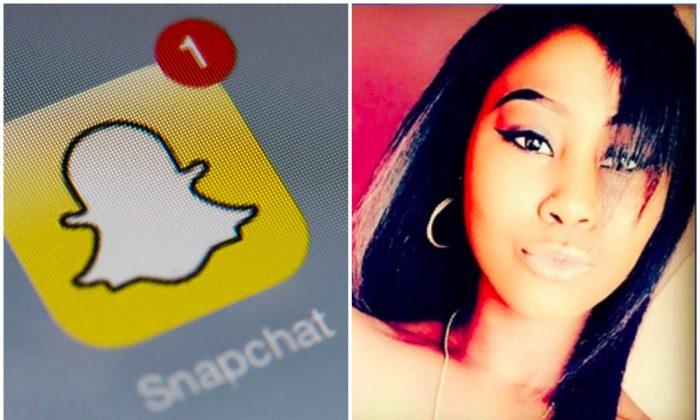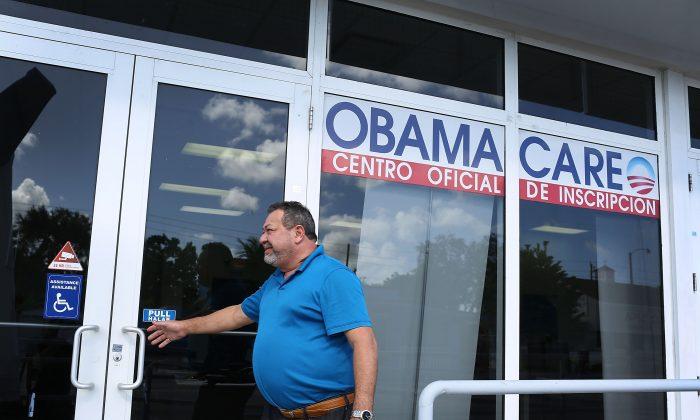Tovonna Holton, 15, took the gun from her mother’s purse. It was Sunday, June 5.
Three hours earlier, a nude video of her in the shower, taken without permission by a friend, had been posted on Snapchat, a mobile messaging app, and was making the rounds.
A distraught Holton tried to explain it to her mother, Levon Holton-Teamer, but didn’t make much sense.
“Tovonna would say, ‘Mommy, I owe them; I owe them.’ I said, ‘What do you mean you owe them?’ I couldn’t understand what was wrong,” Holton-Teamer said, according to WFLA.
Holton-Teamer went to check on Holton—who was cleaning her room, or so she thought.
“I go to the bathroom; I couldn’t get in the bathroom. The bathroom light was off so I tried to get in and I looked down and I saw the puddle of blood. I tried to apply the pressure, the pressure to her head. I tried to save her,” Holton-Teamer told WFLA.
Holton was a freshman at Wiregrass Ranch High School in Wesley Chapel, Fla.
What Happened?
Tovonna’s aunt, Angel Scott, went on Facebook to find information.
“I thought it was just pictures and then the kids started inboxing me,” said Angel Scott, Tovonna’s aunt.
That’s when Scott found out about the nude video of Tovonna, a freshman.
“Everybody was out there talking about her and calling her names and they said it went up on social media, Snapchat.” Scott said.
Authorities are now investigating the incident.
On social media, users went on to share the teen’s picture under #stopbullying.
I love you TT #RIPTovonna #stopbullying pic.twitter.com/A77UHAyXJP
— Es’synce (@MsEssynce) June 9, 2016
My heart is breaking this morning for #TovonnaHolton. This should be more than a #stopbullying campaign. It’s more than bullying.
— Olivia A. Cole (@RantingOwl) June 10, 2016
Holton’s family is now calling for justice.
“I want them to pay, to feel what we feeling, even if their child is convicted or in trouble they can go visit their child,” Scott told WFLA.
Cyber Lawyer Talks About Impact
The humiliation of images like the video of Tovonna are “often more than teens can handle,” said Parry Aftab, founder of WiredSafety and a cyber lawyer for cyberbullying, sextortion, and sexual exploitation on the internet.
“It’s such a devastating thing,” Aftab said.
Aftab said, because Holton was a minor, the friend who took the video could be charged for creating or disseminating sexual images and child pornography.
Self-harm often occurs in the first few hours that images are made public, Aftab said, so communication between teens and their parents before an incident happens is vital.
Most children don’t talk to their parents about social media, and those who do are mostly under the age of 12.
“Teens by default don’t want to have these conversations with their parents,” said Justin Patchin from the Cyberbullying Research Center. “This an opportunity to open the door to conversations about these type of things.”
Many teens actively hide their presence on social media from their parents, and those with cyberbullying problems don’t tell their parents because they are afraid they might overreact or underreact.
“You need to be someone your child will confide in,” said Aftab, adding that parents should refrain from overreacting, screaming, or yelling.
Having a trusted adult or older teen as a friend may also help. The child then has the option to go to another person if he or she doesn’t feel comfortable talking to his or her parents.
Although it’s difficult for parents to know about their child’s activity on social media, there are some signs that may suggest they are being cyberbullied. For example, if the individual was always on a certain platform and suddenly stops using it. This could also mean that the child bullied someone and was then scared of getting in trouble.
All children are at risk of cyberbullying and other types of internet harassment.
“You never know how much pain is being caused by this,” says Aftab.
“Give them a hug and say ‘I am sorry this is happening to you,’” said Aftab also suggesting that parents tell their children they will work through the issue.
Aftab also pointed out that some internet incidents include young boys. The boys are often lured by beautiful women on a webcam and are seduced into taking off their clothes. A message then comes up from blackmailers, usually offshore, demanding money in exchange for the images. The blackmailers may ask for $500 in exchange for not releasing a photo of the minor.
“They fall for it,” said Aftab.
Cyberbullying and Snapchat
Aftab said social media cyberbullying should be reported to the platform involved, adding that Facebook and Instagram will most likely do something about it. The identity of the person reporting an incident will not be compromised.
For cases involving Snapchat, like Holton’s, it may be harder to pin down who actually took the pictures or videos.
Snapchat’s main function is that images are deleted at a certain timeframe after they are posted. However, images may still circulate through screenshots and by recording with other devices.
The disappearing messages might be appealing for cyberbullies, since without the appropriate digital evidence it is difficult to prove that one person sought to harass, intimidate, embarrass, or threaten another, according to the Cyberbullying Research Center.
Aggressors may also customize the saved images to include hurtful comments or memes, and share them beyond Snapchat.
As for Holton’s case, Justin Patchin from the Cyberbullying Research Center, said the Snapchat post may have been a trigger for her suicide.
“My suspicion is there’s something more going on here,” he said.
Patchin said more work needed to be done through school programs. Some schools may spend weeks educating students on internet harassment, but some may only offer a single session.
However, some schools that try and get involved in disciplining a student for cyberbullying actions that take place off-campus and outside of school hours, are often sued for exceeding their authority and violating the student’s right to free speech, according to Stopcyberbullying.org.




